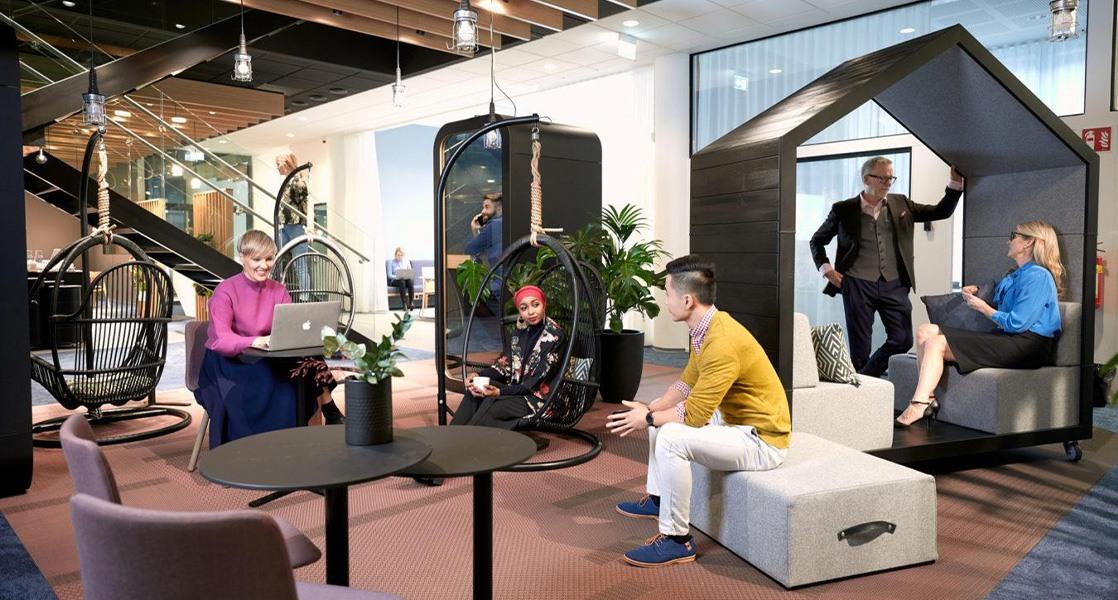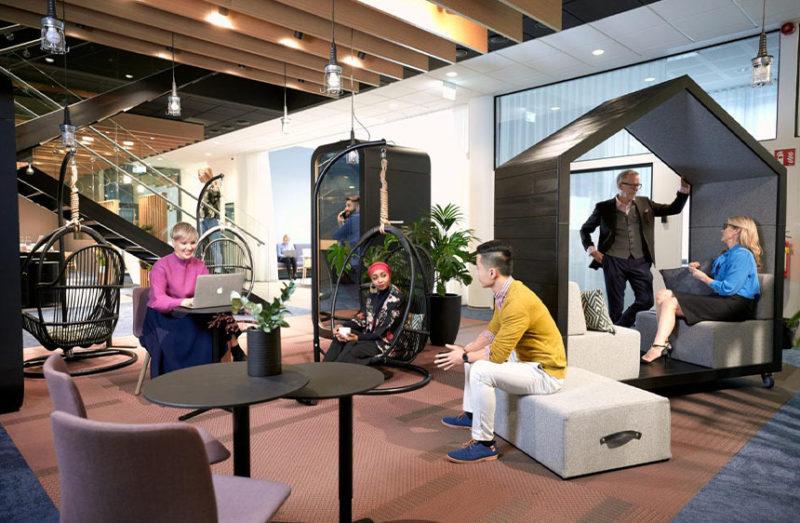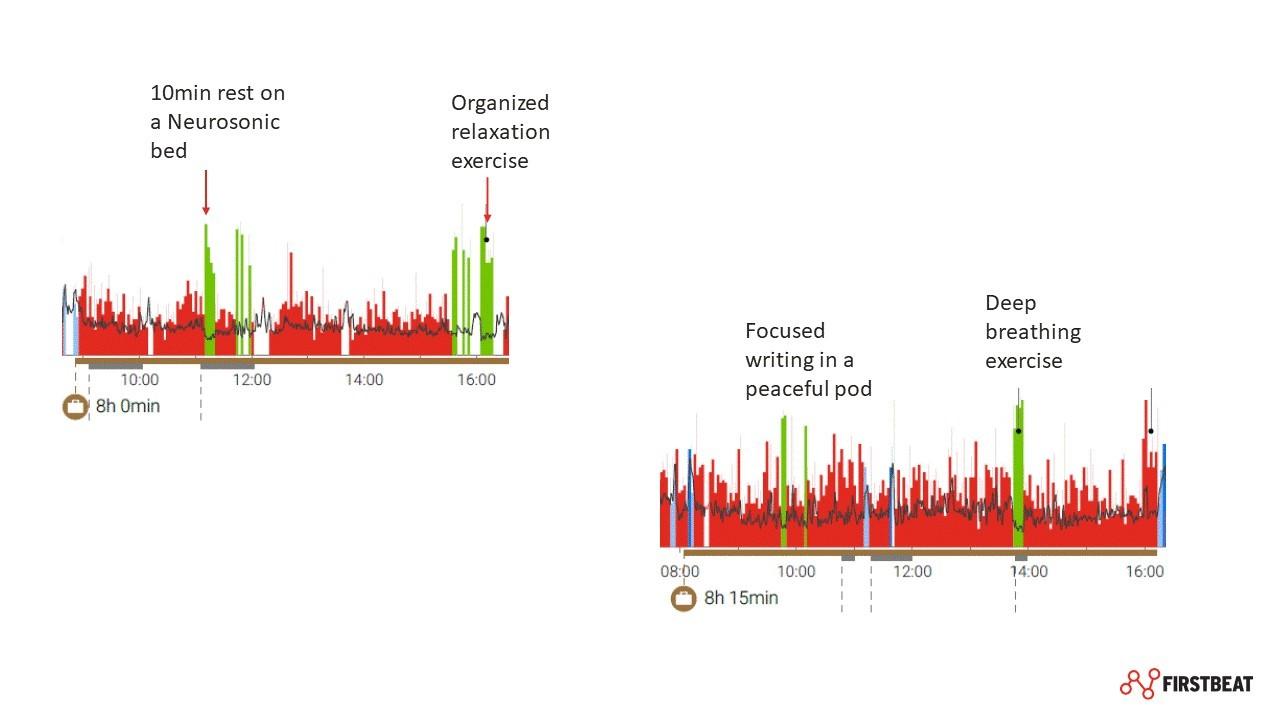
It’s hardly news that a lot of people struggle with a non-stop work pace that blurs the line between ‘at work’ and ‘after work’. A lot of work can be done almost anywhere, and in order to keep up, we do things like take work calls or answer emails by phone while getting a haircut or waiting for lunch, instead of truly taking a deserved break. Or we ignore an already fully booked calendar and squeeze in an online meeting while in transit, on a train or in a coffee shop, where making sure that people cannot hear private information and trying to filter out outside noise adds to the stress, often at both ends of the call.
Don’t get me wrong – the flexibility and time savings provided by technology and remote work is mostly a good thing. I get a lot of work done on trains and airplanes and answering a few emails on the go can ease a heavy workload. But I’ve also become acutely aware of how easy it is to overdo it. To maintain a sustainable balance, we need to make a conscious effort to draw a line between work and breaks or leisure time. It’s not always easy, but good planning and basic awareness of healthy work habits go a long way.
Ergonomic, Well-Designed Workspaces Boost Effectiveness
If you don’t have an office or if you move around a lot, co-working spaces are a great alternative. Firstbeat was recently involved in a small pilot project with UMA Workspace to study the effect of well-planned work environments on subjective and measured well-being (See press release, in Finnish). The project compared the participants’ Firstbeat Lifestyle Assessment results between two different work weeks: First, a normal work week with no special emphasis on healthy work habits, and then an intervention week at the UMA workspace, where participants were encouraged to take advantage of ergonomic workstations and various opportunities to recharge during the workday. Due to the small group size and life interfering, the average group result did not show major differences between the 2 weeks, but subjectively, people reported significantly less feelings of stress and better sleep during the second week. We also saw several examples where planned recovery showed up on the Firstbeat report as a green moment (Fig. 1), highlighting the value of recharging breaks.
It was also great to see and experience the creative, visually pleasing solutions that the workspace offered – from quiet phonebooths and ergonomic chairs to small meeting rooms and group workspaces. I worked there for a couple of hours while waiting for my train, and it was a brilliant alternative to a noisy train station or crowded café, allowing me to catch up on work in a peaceful, comfortable setting. A great option for busy people on the go!

Figure 2. Example of a well-designed, versatile co-workspace at UMA Workspace.
Open Office as a Source of Stress?
A lot of studies have shown that noise is a major distraction for open office workers, and the wasted time and reduced effectiveness caused by chatter between people and interruptions can add up to a significant expense. Background noise can actually inhibit cognitive performance and contribute to a sense of overstimulation, which has been linked to elevated stress levels. And stress, if excessive or chronic, is a serious productivity killer and risk factor for mental and physical ill health.
The significance of this was highlighted to a corporate manager who took part in Firstbeat Lifestyle Assessment (Fig. 3). All of his work time showed up as ‘stress’ on the Firstbeat report, except one late afternoon there was a significant period of recovery (between 5-7 pm) when the office had emptied of other people. He said he had always found the open office format stressful and concluded that to manage his daytime stress going forward, he should occasionally take distance days or come to work late and stay after the office quiets down, which was a productive time for him.

Figure 3. Manager’s Firstbeat report shows the effect of a quiet work environment on his recovery at the end of the workday – a period of mindful but productive work.
Of course, open offices do not affect everyone the same way because we have different tolerance for noise and disturbance, but it’s important to recognize individual stress points and make adjustments if needed. Open offices should have enough quiet phone and meeting rooms and peaceful break rooms to support staff well-being – and the office culture needs to accept taking breaks as a healthy activity, instead of taking pride in a busy, nonstop work pace. As individuals, we should get away from the mentality of squeezing in bits of work into every possible break and learn to appreciate the value of mindful “offline” time – chances are that we’ll be a lot more effective when we get back to the computer.
Are you always stressed? Or wonder how much recovery your days have.
See what Firstbeat can reveal about your day!
You might also be interested in

How to Make Working from Home Work for You
Put these steps in place and enjoy the benefits of remote working.

Balancing Good and Bad Wellness Choices: How to Get it Right?
Finding the balance between good and not-so-good choices is about what works for you.


